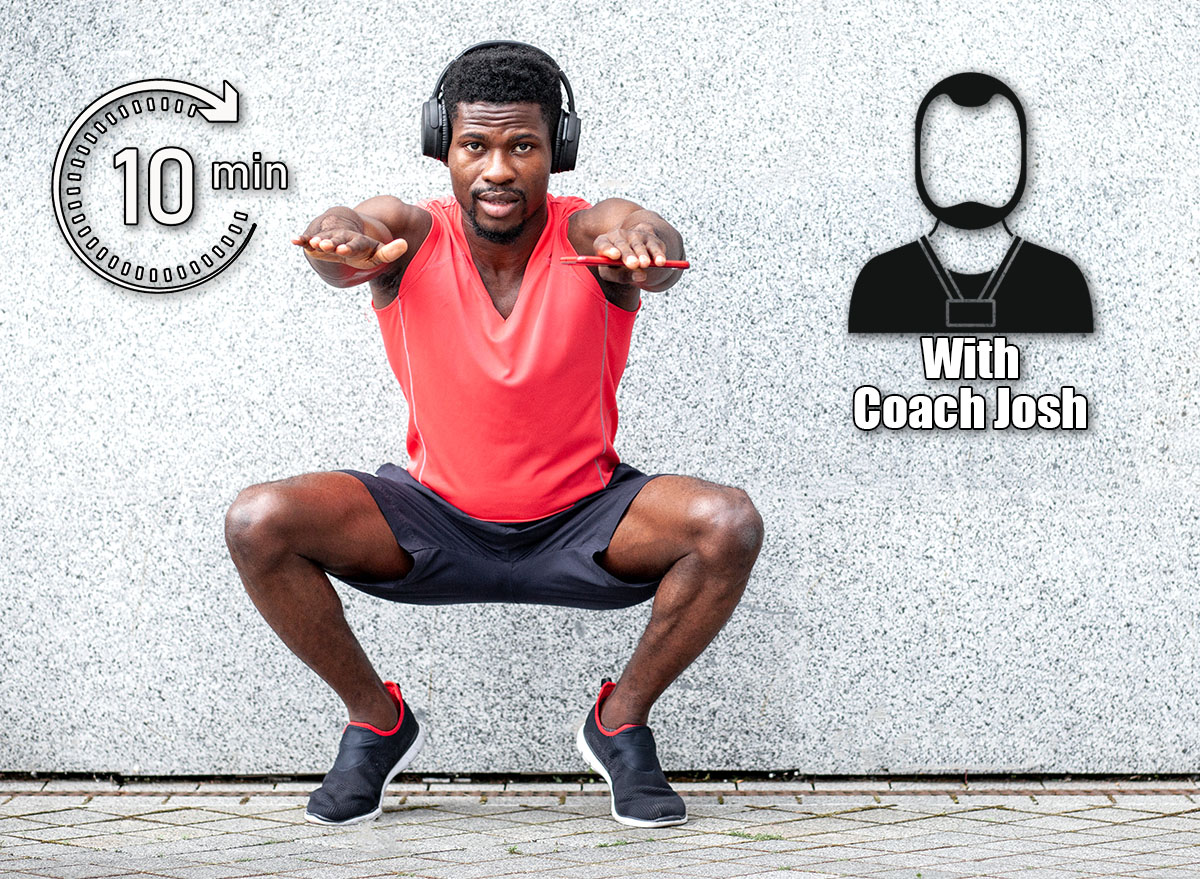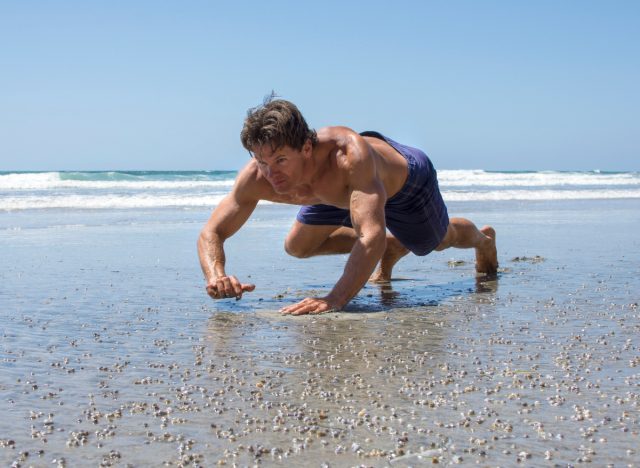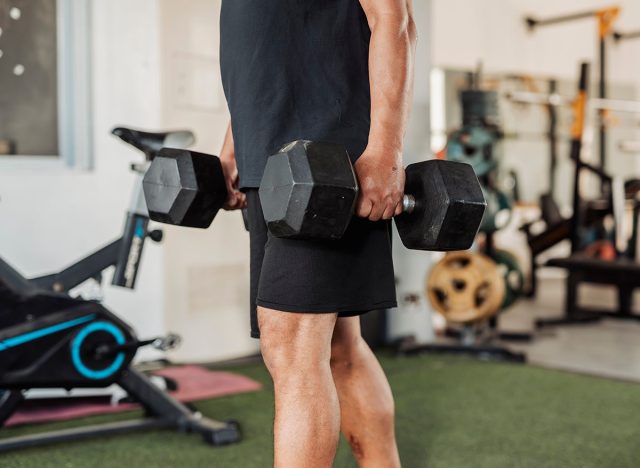4 Fitness Challenges Every Man After 40 Should Master

Let’s face it—your body doesn’t bounce back like it used to. Those weekend warrior sessions that left you sore for a day now seem to linger for a week. But here’s the thing: getting older doesn’t mean getting weaker, at least not if you’re smart about it.
After 40, men will typically experience gradual declines in several key fitness areas due to hormonal changes, reduced recovery capacity, and the natural aging process. Abilities impacted by these changes include diminished muscle mass and strength, explosive power and speed, flexibility and joint mobility, balance and coordination, cardiovascular endurance, recovery ability, and hormonal optimization. While none of these losses can be fully avoided, smart training can help slow the process.
These four challenges will help you maintain the strength, mobility, and confidence you need to tackle whatever life throws your way.
Why These Challenges Actually Work

These four challenges help men over 40 stay competitive and confident by targeting the key physical traits that decline with age – strength, mobility, coordination, balance, and endurance. Those are the core traits that define a functional and athletic body at any age. By combining them into a full workout, you create a powerful challenge that reinforces the physical capabilities needed to attack every day activities. You will be left feeling in charge of your body by moving with purpose.
The exercises below, while simple, are extremely effective in challenging your full-body movement. They will each touch on a multitude of the above abilities to help maintain your peak fitness level as you age – providing overall longevity.
4 Fitness Challenges Men Over 40 Should Master
Challenge #1: 60-Second Bear Crawl

How to do it: Start in a tabletop position on your hands and knees. Position your hands under your shoulders and knees under your hips. Lift your knees an inch off the ground. Keep your back flat and core tight. Move forward with the opposite hand and foot like you’re walking.
What counts as passing: Passing the challenge would be completing the walk forward and backwards for 60 seconds without dropping your knees to the ground.
Why it matters: This challenge helps to rebuild coordination, core control, and shoulder stability.
Can’t do it yet? Work up to completing this challenge by starting with simply holding the bear crawl position. This will allow you to focus on your form and comfort with the position. From there you can perform shorter crawl durations and gradually increase as you get stronger.
Making it safer: If you suffer from shoulder or wrist pain, try a closed fist or elevated hand position to help reduce strain. Aim for slow and steady movements with limited range and volume if feeling unstable during the workout.
Challenge #2: 60-Second Wall Sit with Calf Raises

How to do it: Stand with your back flat against the wall. Slide down until your knees are bent at a 90-degree angle and your thighs are parallel with the ground. Engage your core and slowly raise your heels off the ground then back down. Keep repeating the heel raise until 60 seconds has passed.
What counts as passing: It’s considered passing this challenge when you can hold the wall sit for 60 seconds and complete 15 slow, full-range calf raises simultaneously without breaking form.
Why it matters: This is a critical challenge because it builds isometric strength in the quads and glutes. Additionally, it aids in strengthening the ankles and calves, both of which are critical for joint protection, mobility, and balance.
Can’t do it yet? Begin with higher angled wall sits for shorter hold to help build up strength in your core and legs. Practicing calf raises separately will help to simplify the movement before combining them into one complete exercise. As you get more comfortable, increase the time and depth of the squat.
Making it safer: A rolled towel behind your knees can help to alleviate joint pain, along with stopping the knee angle above 90 degrees. Lastly, keep your feet flat and aligned to prevent extra strain on your ankles.
Challenge #3: Farmer’s Carry for 60 Seconds

How to do it: Stand tall with your feet hip-width apart. Hold a dumbbell or kettlebell with a neutral grip. Engage your core and walk forward without letting the weights sway or your torso lean. Maintain controlled, steady steps.
What counts as passing: This challenge has been passed when you can walk 60 seconds with 50 to 75% of your bodyweight in each hand while keeping perfect posture.
Why it matters: Farmer’s carry builds strength, grip endurance, postural alignments, and core control that are all crucial for every day function.
Can’t do it yet? Work on lighter weights and shorter distances to start. The initial focus should be posture then time and weight increase once you master the right posture.
Making it safer: For those with back pain, do lighter weights to allow your mind to focus on bracing your core and keeping your spine neutral. Substitute kettlebells and dumbbells for a hex bar to help with grip strength if you have hand or wrist issues.
Challenge #4: Turkish Get-Up with 35-40 Pounds
How to do it: Lie flat on your back. Hold a kettlebell or dumbbell in one hand with that arm fully extended upwards. Bend the same side knee until your foot is flat on the ground. The opposite arm and leg should be angled away from you. Focus your eyes on the weight as you rise to your elbow then hand. Bridge your hips up. Bring the straight leg underneath you into a kneeling position. Stand straight up then reverse the steps to return to the starting position.
What counts as passing: Consider yourself to have passed this challenge when you can complete a full, controlled rep on each side with a 35 to 50 pound weight without losing your balance.
Why it matters: Turkish get-ups are the ultimate test for shoulder stability, mobility, core control and full-body coordination – all of which decline with age when not trained.
Can’t do it yet? Begin by breaking down the moves into phases with your bodyweight. From there you can repeat the movements with a shoe balanced on your fist before moving to hold a light weight. These steps will allow you to build confidence and control over time.
Making it safer: If you have suffered from shoulder injuries then a kettlebell will be better than a dumbbell since it rests better on the forearm. You can also place a mat under your knees to take pressure off them. Remember to keep tension in your arm without hyperextending.
How Often Should You Test Yourself?

Test yourself with these challenges about once every four to six weeks to measure progress but train for them two to three times per week through a balanced schedule. By testing every four to six weeks, you allow your body to adapt and improve without burning out or overusing the muscles. Training two to three times a week will build the proper strength, control, and mobility for the best results.
Fuel Your Success

It’s critical to be strategic with what you are eating and how you are living to maximize performance on these challenges. For nutrition, prioritize protein such as eggs, chicken, fish, lean beef, lentils, and tofu to support muscle repair and growth. Anti-inflammatory foods will aid in joint health to make compound movements easier. These foods should be complemented by items that are rich in omega-3s like salmon, chia seeds, and walnuts. Eat berries and dark leafy greens to provide antioxidants, and hydration is always critical to improve joint lubrication and muscle performance.
When it comes to your lifestyle, sleep matters as deep sleep helps testosterone rise and tissues repair. Prioritize recovery to stay loose between sessions and warm up intentionally to keep joints fluid and reduce injury risk. Stay consistent with your routine rather than focusing on the intensity to deliver the most effective results.
What to Expect

Mastering these challenges will vary based on starting fitness level, but the average man over 40 can expect noticeable progress within 4-8 weeks of consistency. Fully mastering these movements can take two to four months. Progression through the exercises will result in improved posture, stronger grip and core ability, better joint control, and enhanced balance.
There will also be an increase in energy levels, while everyday movements will feel easier and nagging aches could begin to fade. The above challenges are built to promote real-world strength and functional confidence to help men over 40 move with ease as they age. It is important to remember that the key is to focus on progression with these challenges.